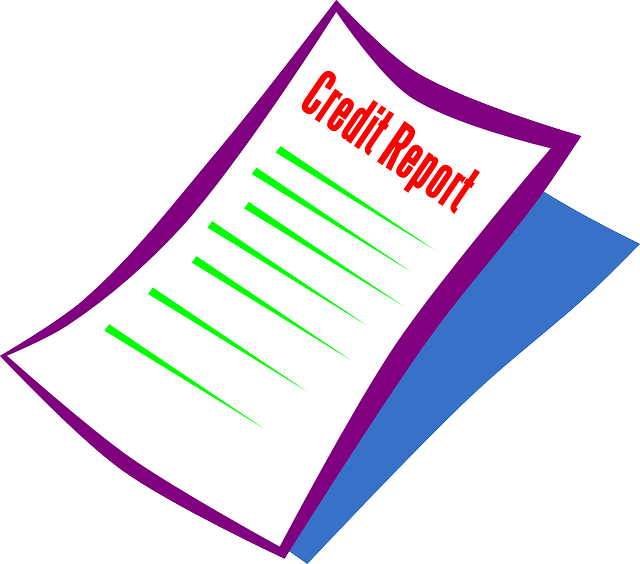Personal Loans for Debt Consolidation simplify managing multiple debts by transforming them into one fixed-rate loan with tailored repayment terms, reducing monthly payments and missed bill opportunities. Before applying, compare interest rates and fees, assess creditworthiness, and evaluate potential savings. Choose between secured or unsecured loans based on financial health and available assets. Securing a personal loan involves assessing debt, comparing offers, preparing documents, submitting an application, and reviewing terms. These loans often offer lower rates than credit cards, saving money and simplifying repayment for high-interest debt. Effective management includes budgeting, tracking expenses, prioritizing high-interest debts, and maintaining open communication with lenders.
Struggling with multiple debts, especially high-interest credit card bills? Personal loan consolidation could be a powerful tool to simplify repayment and save money. This comprehensive guide explores how combining your debts into one personal loan can offer significant benefits, including lower interest rates and streamlined payments. We’ll walk you through the process, from understanding debt consolidation loans to effective post-consolidation debt management strategies. Take control of your finances with our expert insights on Personal Loans for Debt Consolidation.
- Understanding Personal Loans for Debt Consolidation: A Comprehensive Guide
- Benefits of Consolidating Multiple Debts into One Loan
- Types of Personal Loans Available for Consolidation
- Steps to Secure a Personal Loan for Credit Card Repayment
- Comparative Analysis: Personal Loan vs Credit Card Interest Rates
- Strategies for Effective Debt Management After Consolidation
Understanding Personal Loans for Debt Consolidation: A Comprehensive Guide

Personal Loans for Debt Consolidation offer a streamlined approach to managing multiple debts by providing a single, consolidated loan with a fixed interest rate and repayment terms tailored to your financial situation. This strategy can simplify your billing cycle, reduce the risk of missing payments due to multiple due dates, and potentially lower your overall monthly payment. By focusing on one loan, you also avoid the temptation to spend beyond your means, as the funds are allocated specifically for debt repayment.
This type of loan is particularly beneficial when dealing with high-interest credit cards or loans with varying terms. A comprehensive guide should outline key considerations such as comparing interest rates and fees, understanding repayment options, and evaluating potential savings. Additionally, it’s crucial to assess your creditworthiness before applying, as lenders will evaluate your credit history, income, and debt-to-income ratio to determine loan eligibility and the best possible terms for your personal loan consolidation.
Benefits of Consolidating Multiple Debts into One Loan

Debt consolidation is a powerful strategy that can simplify your financial life by transforming multiple debts into a single, manageable loan. One of the primary benefits of this approach is reduced stress and improved cash flow. When you have several loans with varying interest rates and repayment terms, keeping track of them can be overwhelming. Consolidating these debts into one personal loan for debt consolidation allows you to streamline your payments, making it easier to stay on top of your financial obligations.
Additionally, a consolidated loan often offers lower interest rates compared to your existing debts, saving you money in the long run. By combining multiple loans, you may be able to secure a more favorable interest rate, which can significantly reduce the overall cost of repayment. This is especially beneficial if you have credit card balances with high-interest rates, as consolidating them into a personal loan can provide a clearer path to debt elimination and financial stability.
Types of Personal Loans Available for Consolidation

Personal loans for debt consolidation offer a streamlined approach to managing multiple debts. These loans are specifically designed to pay off several high-interest liabilities, such as credit cards, personal lines of credit, and even other installment loans. The primary types include secured and unsecured options. Secured personal loans require collateral, often in the form of a home equity loan or car loan, which acts as a safeguard for the lender. Unsecured loans, on the other hand, don’t require any collateral but typically carry higher interest rates due to the increased risk to the lender.
Each type serves different needs and comes with its own set of advantages. Secured loans often offer lower interest rates and more flexible terms since they’re backed by an asset. Unsecured loans provide flexibility in borrowing without tying up assets, but borrowers should be prepared for potentially higher monthly payments and a shorter repayment period. Choosing the right loan type depends on individual financial situations, including creditworthiness and available collateral.
Steps to Secure a Personal Loan for Credit Card Repayment

Securing a personal loan for credit card repayment involves several key steps. First, assess your financial situation to determine the amount needed to cover all your credit card balances. This requires listing your current debts, including card details like interest rates and minimum payment amounts. Then, calculate a reasonable monthly repayment plan that aligns with your budget, ensuring you can afford the fixed personal loan payments without overextending yourself.
Next, compare different personal loan offers from various lenders. Look for competitive interest rates, flexible terms, and options for early repayment without penalties. Consider using online platforms or financial advisors to shop around for the best deal. Once you’ve chosen a lender, prepare necessary documents like identification, proof of income, and employment history. Submit an application, and if approved, review the loan terms carefully before signing and finalizing the consolidation process.
Comparative Analysis: Personal Loan vs Credit Card Interest Rates

When considering personal loan consolidation for debt repayment, it’s crucial to understand the interest rates attached to both personal loans and credit cards. In many cases, Personal Loans for Debt Consolidation offer significantly lower interest rates compared to credit cards. This is particularly true for individuals with good to excellent credit scores, as they stand to secure more favorable terms on personal loans. The difference in interest rates can be substantial over time, saving borrowers money and speeding up the debt repayment process.
A comparative analysis reveals that while credit card interest rates can range from 12% to 29%, depending on the issuer and credit history, personal loan rates typically start from around 5% and can go as low as 3%. This means that by consolidating their debts into a single personal loan, borrowers not only simplify their repayment process but also potentially reduce the overall cost of interest. Such savings can be a game-changer for those aiming to break free from the cycle of high-interest credit card debt.
Strategies for Effective Debt Management After Consolidation

After successfully consolidating your debts into a single personal loan, effective debt management strategies become paramount to financial wellness. The first step is to create and adhere to a strict budget. This involves tracking expenses, allocating funds for essentials, and setting aside as much as possible for loan repayment. Prioritizing debt repayment is crucial; focusing on high-interest debts first can save you money in the long run.
Regularly reviewing your financial situation and adjusting your budget as needed ensures that any unexpected changes or income fluctuations don’t throw you off track. Additionally, maintaining open lines of communication with your lender regarding repayment plans and potential adjustments to terms can provide valuable support during challenging financial periods.
Personal loans for debt consolidation offer a strategic approach to managing multiple debts, providing clarity and financial control. By consolidating credit card repayments into one loan, individuals can simplify their finances, reduce interest expenses, and focus on repaying the principal. This comprehensive guide has outlined the benefits, loan types, application process, and post-consolidation strategies, empowering folks to make informed decisions about their debt management. Remember that, in today’s financial landscape, understanding personal loans for debt consolidation is a key step towards achieving financial freedom.
